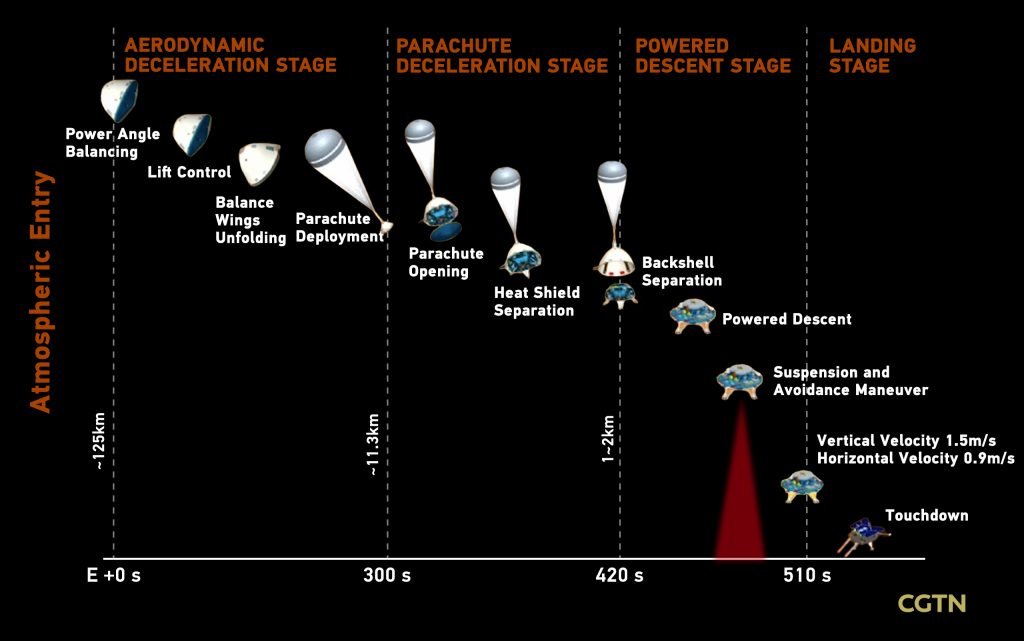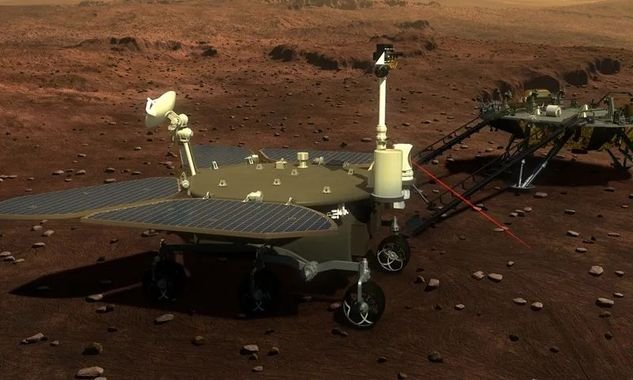Zhurong, the first China’s rover on Mars, landed this Saturday morning. It’s part of the Tianwen-1 mission, launched on July 23, 2020.
Source: CGTN
It landed on a pre-selected landing zone in the southern part of an icy area of the planet known as Utopia Planitia at 7:18 a.m., the scientific research team confirmed with the signal sent back by the rover, the first landing on Mars ever by a Chinese vehicle.
The probe started descending from its parking orbit at about 1 a.m. and maneuvered to the entry orbit. The landing module, consisting of the lander and the rover Zhurong, separated from the orbiter at about 4 a.m., according to the CNSA.
After about a three-hour descent, the module entered the Martian atmosphere, ushering in the most challenging moment on the way down to the Red Planet.

The module first decelerated with the friction of the Martian atmosphere, a process in which it overcame high temperatures and attitude deviations, said Wang Chuang, chief director-designer of the Tianwen-1 probe with the China Academy of Space Technology.
The descent speed decreased by about 90 percent after the aerodynamic deceleration.
Then, the parachute was unfurled to continue reducing the velocity to 100 meters per second before the reverse thrust engine ignited to decelerate the speed, Wang explained.
At about 100 meters above the surface of Mars, the module entered the hovering stage for completing the obstacle avoidance and measuring the slopes of the surface. The craft reached the Martian surface under the protection of a buffer mechanism.
During the nine minutes of the process, the module had to slow down from a velocity of about 20,000 kilometers per hour to zero, said Wang.
About 30 minutes after separation, the orbiter returned to the parking orbit to provide relay communications for the landing module.
What is Zhurong going to do?
The rover carries six scientific payloads: a multi-spectral camera, a subsurface detection radar, a Martian surface composition detector and magnetic field detector, a Mars meteorometer, and a terrain camera.
They are expected to provide first-hand materials for research on the planet’s space environment, surface topography, and soil structure, among which, meteorology-related research will collect atmospheric data on temperature, pressure, wind speed and direction, as well as the magnetic and gravitational fields on the planet.
Facing the dusty environment on the planet, designers used a new dust-proof material for the rover. Even if the rover gets dirtied with the Martian dust, it can shake it off with vibration.
They also kept an identical copy of Zhurong the rover in the lab. If the rover encounters any problem on Mars, the ground crew will conduct simulations for a resolution before issuing instructions to the rover on Mars.




